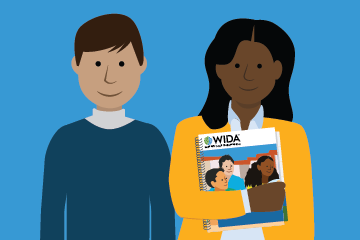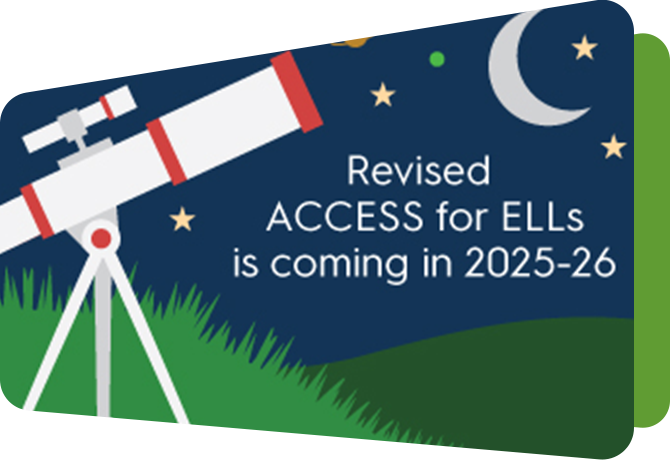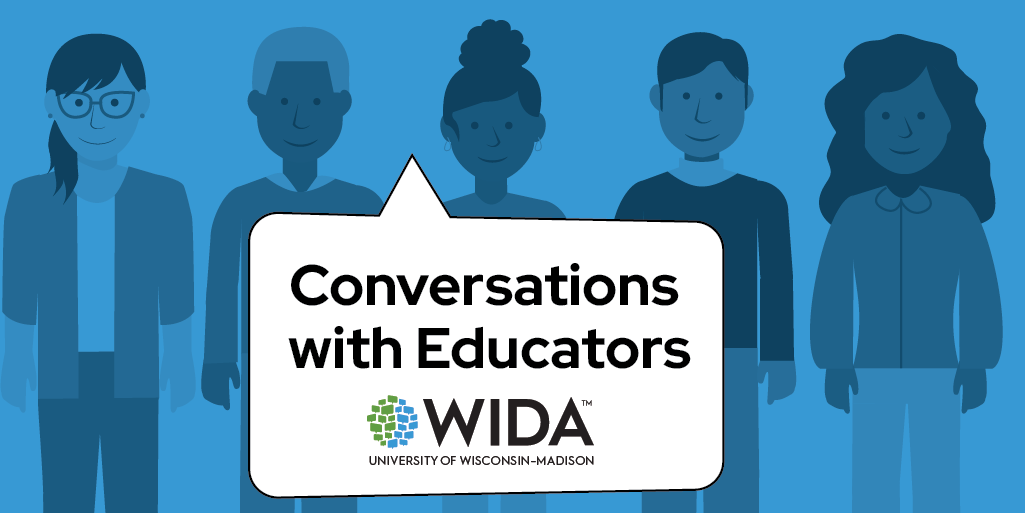Answering your questions on multilingual learners and the science of reading

Educators working with multilingual learners often ask: How does the science of reading apply to multilingual learners? In turn, how does the WIDA English Language Development (ELD) Standards Framework address the science of reading?
At WIDA, our focus is on language — the foundation that supports learning across content areas, including literacy. We help connect reading instruction and language development. We strive to provide educators with tools and resources to support multilingual learners (MLs) as they develop the language for engaging with literacy instruction.
In this article, you’ll find answers to two frequently asked questions about the science of reading and multilingual learners and how our work aligns with research-based reading instruction. This is part two of a two-part series. Read the first article on multilingual learners and literacy.
How Does the Science of Reading Apply to Multilingual Learners?
The science of reading, as defined by The Reading League, is a vast, interdisciplinary body of scientifically based research about reading and issues related to reading and writing. This body of research helps educators understand how to teach reading literacy.
Recent reports from the Council of the Great City Schools (CGCS), The Reading League (TRL) and the National Committee for Effective Literacy (NCEL) emphasize that MLs need explicit English language instruction alongside strategies to teach literacy. Because MLs may have less exposure to English before starting school, they may require additional support. The CGCS Framework explicitly recommends that English learners develop literacy with the following:
- Developing oral language skills in English, while recognizing the strengths of their home language(s)
- Discovering how English works, including similarities and differences from their home language(s)
- Building phonics and decoding skills in all their languages to read and understand grade-level content
- Strengthening academic English to grasp meaning in different subjects
A comprehensive approach is key — phonics instruction should go hand in hand with language development to ensure students can both read words and understand their meaning. Educators should also help students connect their home language skills to their English learning, making literacy instruction more effective.
When carefully crafted, content-based language development and literacy opportunities can foster the ability to read and simultaneously develop English language proficiency.
Background knowledge and understanding of a wide variety of words and ideas are key components of reading and literacy. Learners need to be able to use their brain pathways to automatically decode letters, words and sentences so they can focus their brain power on comprehending information. It is this combination of automaticity and understanding that leads to fluency. Furthermore, fluency across languages can bring great benefits. Learners with broad exposure to ideas, concepts and words in any language will be more prepared to transfer that knowledge and understanding to a new language.
Scarborough’s reading rope illustrates the interconnected strands of language comprehension (which includes background knowledge, vocabulary, language structure, verbal reasoning and literacy knowledge) and word recognition (which includes phonological awareness, decoding and sight recognition).
To address multilingual learners’ unique needs, more recent models of reading highlight the role of multilingualism and the importance of considering the named home languages and cultures of our students. These reading models position language as emerging through interaction with a range of people, environments and experiences. These models include connections to self-regulation, cultural and content knowledge, and theory of mind (Duke & Cartwright, 2021). The 2021 model from Aukerman and Schuldt considers the social and cultural context of reading as well as the strategies and approaches that readers use to engage with a text, combined with their cultural and linguistic backgrounds. In a 2024 article, Leider and Proctor present a “dynamic idiolect framework” that includes linguistic awareness, sensemaking and linguistic lamination. Their framework considers how an individual engages with various inputs as they language.
The WIDA ELD Standards Framework complements literacy instruction with a focus on building understanding for meaning, comprehension and ultimate proficiency in English. If a learner has built the patterns in their home language and that language is transferable to English, then the process of building upon the initial literacy skills becomes easier. It is comparable to paving a road that already exists versus clearing the way for an entirely new street. Some language pairs make layering one upon the other simple, for example, languages that use similar alphabets or have many overlapping root words and cognates. Other languages are more challenging to layer. Teachers can support MLs by providing clear connections across languages and making the similarities and differences obvious. Helping MLs leverage their knowledge in their home language to build skills in an additional language is helpful for their success.
How Does the WIDA ELD Standards Framework Address the Science of Reading and Literacy?
The WIDA ELD Standards Framework is designed to work alongside any literacy framework used by schools. It does not replace state English Language Arts (ELA) standards but complements them by focusing on language learning within all subjects.
The following are examples of instructional strategies that are rooted in both the science of reading and the research behind the WIDA ELD Standards Framework:
- Ensuring that instruction in foundational reading skills in English is interwoven with English language development so that students are learning to read words they already know and understand
- Building cross-linguistic connections between English and students’ home languages and literacies
- Seeking to activate and build upon students’ background knowledge, including their cultural, linguistic and experiential resources
- Offering opportunities to develop oral language skills for vocabulary development and phonemic awareness
- Considering each students’ individual strengths and areas of growth in literacy instead of a one-size-fits-all approach (e.g., supporting a high school student vs. a second grader developing reading fluency in English)
- Ensuring students have access to linguistically rich classroom learning experiences that offer frequent opportunities to develop language through meaning-focused discourse
- Providing students with opportunities to engage in critical thinking and reasoning regardless of proficiency level
Foundational literacy skills are part of English Language Arts content. The ELD Standards Framework provides guidance on how to identify the language to be used in a particular unit, lesson or activity related to foundational literacy skills. If the activity or lesson is on the development of foundational literacy skills in English or Spanish, our frameworks complement the content.
What’s Next?
Our experts at WIDA are continuing to work on literacy-specific resources, tips and guidance for educators of MLs, while being mindful of the different sociocultural and educational contexts that students experience.
In the meantime, check out our Reading With Multilingual Learners webpage.
This resource hub offers research-based insights and practical tools to help you leverage the strengths MLs bring to the classroom to improve their reading comprehension and engagement. On the webpage, you will find the following:
- A video highlighting Carmen, an elementary teacher in Minnesota, who incorporates her students’ home literacy experiences into her teaching
- A series of WIDA Snapshots providing strategies to engage the unique strengths multilingual learners contribute to their literacy development
- Tools to gather information about students’ reading strengths and preferences and generate ideas for scaffolding reading instruction





